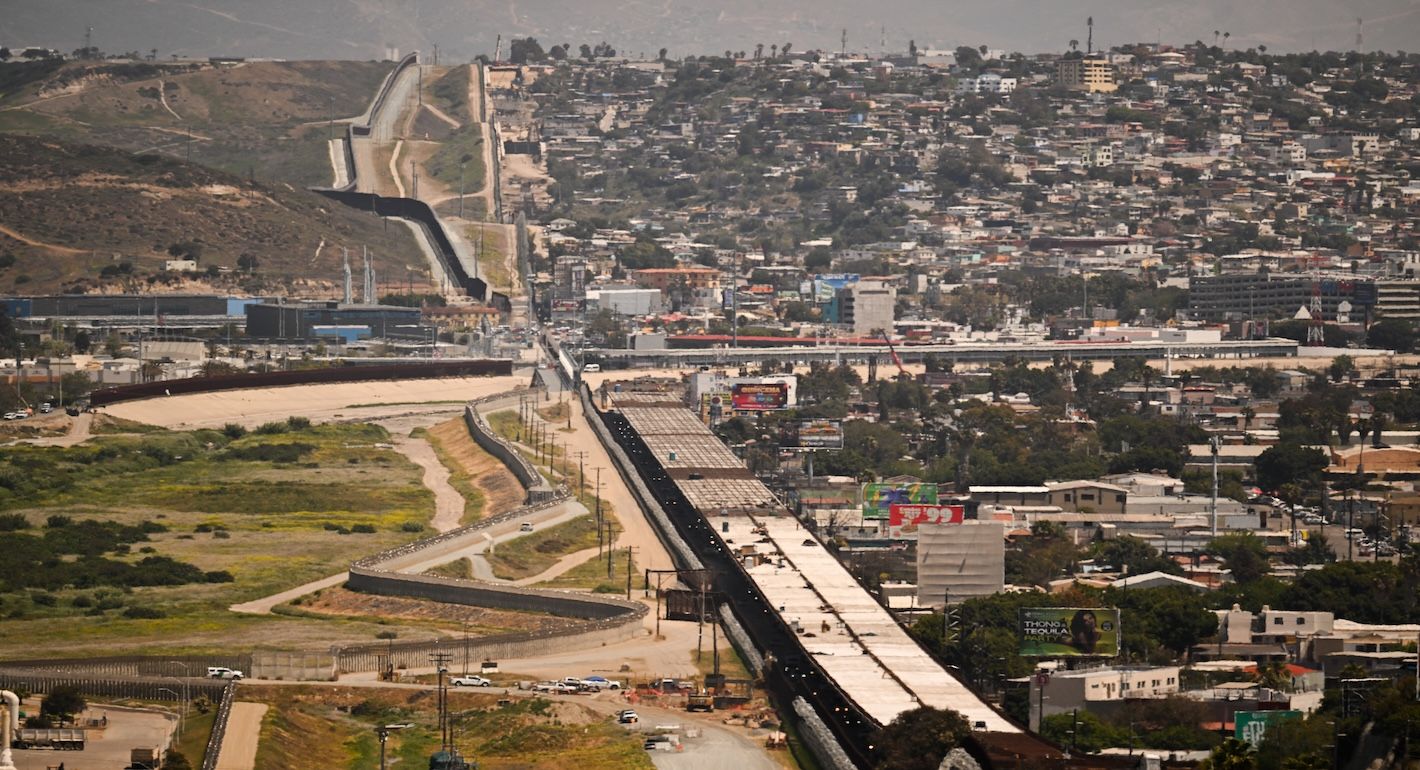The future of humanitarian protection in the United States is a pressing question for immigration policy. This piece, the second in a series on U.S. migration policy, examines the current debate and the stakes. Though focused on the United States, these debates matter worldwide. Everywhere, humanitarian protection has broader implications for central facets of immigration policy.
A Traditional System Based on Asylum
The core of U.S. humanitarian protection of “forced migrants”—people moving across borders to seek protection—emerged after World War II with the Geneva Convention of 1951. This convention didn’t question countries’ authority to control borders, but it created an exception for refugees.
For wealthy countries, this system didn’t generate broad controversy until the late twentieth century. Most forced migrants stayed close to the countries they had fled, the number of migrants seeking protection in the Global North seemed manageably low, and the narrow definition of “refugee” limited who could qualify. But by the 1980s and 1990s, the system became more fragile. Most forced migrants remained confined to their home regions, but more of them reached wealthy countries. In the 1980s, for example, war and upheaval in Central America drove many to the United States, where they sought protection.
Managing Asylum
Over time, many national governments faced mounting domestic pushback against these forced migrants and responded by limiting asylum in practice. Some governments “externalized” their borders. For example, in the 1980s, the U.S. Coast Guard started to intercept Haitian migrants on the high seas to keep them away from Florida, where they could apply for asylum. In 1997, the European Union adopted the Dublin system, with its “safe third country” rule barring migrants from asylum if they passed through another country where they could have applied.
In 2016, the EU and Türkiye agreed that the latter would act to limit migration from the Mideast to Europe, in exchange for several billion euros, looser travel restrictions for Turkish citizens entering the EU, and resumption of long-stalled talks on EU membership. In 2020, the first administration of U.S. President Donald Trump used a public health statute to close its borders to asylum-seekers. It also required them to wait in Mexico for their dates in U.S. immigration courts. Both the first Trump administration and the administrations of former president Joe Biden adopted other techniques to limit access to asylum at the border.
The U.S. government has also tightened the legal standards to qualify for asylum. It narrowed what qualifies as persecution and made it harder to get asylum based on domestic violence. Procedural hurdles increasingly block access. These hurdles include limits on access to the asylum system for those who cross between ports of entry, and long waits for court dates. Detention in distant locations, often under difficult conditions for the detainees, limits access to lawyers and prompts abandonment of claims.
Alternatives to Asylum
Focusing only on asylum gives an incomplete picture of humanitarian protection. Many forced migrants have received other forms of permission to come and stay. One avenue is the refugee admissions program. People apply from outside the United States. Those admitted as refugees are on a path to lawful permanent residence and then to citizenship. But their number is a tiny fraction of forced migrants worldwide. Every year, the president sets the number of refugee admissions by region. In the administrations of Biden and former presidents Barack Obama and George W. Bush, the annual worldwide limit ranged from 70,000 to 125,000. The first Trump administration reduced it to historical lows, and the second Trump administration has cut it close to zero.
The U.S. government has protected forced migrants in other ways that stop short of lawful permanent residence and a path to citizenship. This treatment of forced migrants expands humanitarian protection significantly beyond what asylum and refugee admission can do. Shaping these approaches is the key to defining what humanitarian protection in the future should be.
One vehicle is a U.S. federal statute that authorizes “parole” to let in noncitizens outside traditional pathways to lawful permanent residence and temporary admission categories. Many parolees may not have qualified as refugees, but parole gives them permission, without formal admission, to enter and stay temporarily, with work authorization. Parole has a long history in U.S. law. President Dwight Eisenhower used it to let in Hungarians in 1956. Over the decades, and even after the Refugee Act of 1980 formalized asylum protections, parole allowed in many forced migrants, from Cubans in the early 1960s to the Biden parole program for noncitizens from Cuba, Haiti, Nicaragua, and Venezuela.
Another type of protection is Temporary Protected Status, or TPS, authorized by federal statute in 1990. If the U.S. president designates a country for protection, its nationals already in the United States can apply for TPS (and work authorization) in renewable eighteen-month increments. The government grants TPS on a country-by-country basis, and applicants don’t need to show individualized harm.
Protection can also take the form of deferred action. This term refers to prosecutorial discretion that the government exercises to let potentially deportable noncitizens stay in the United States. Deferred action can shield individuals or groups of noncitizens, such as the Deferred Action for Childhood Arrivals (DACA), for young people brought to the United States by parents or others. But deferred action can also protect forced migrants in ways that resemble parole or TPS.
Fixing Humanitarian Protection in the Short Term
Some observers urge expanded eligibility for asylum. This view responds to trends in displacement due to global conflict and climate change, but it has run into the realities of politics. Increases in the number of forced migrants have led, despite the commitment made in 1951, to a significant shift in the politics of migration in the United States.
As explained in the first piece in this series, an immigrants’ rights movement emerged in the United States from the 1970s to the early twenty-first century. Much of it spoke for the undocumented—millions of people who play an essential role in the economy and in society. Many have U.S. citizen children. But especially in the 2010s, the movement lost traction as politics shifted away from the undocumented and toward forced migrants arriving on the southern border. Opportunistic politicians shouted that national borders are out of control and cast immigration law as a shield to protect “us” from foreign threats. The view became widespread that the border had to be brought under control. The first Trump administration adopted new measures to limit asylum, and some of them later became Biden administration policy.
Fixing Humanitarian Protection: Immediate Steps
In this political reality, what is the future of humanitarian protection? The daunting goal is the best blend of asylum, refugee admissions, parole, TPS, deferred action, and similar approaches, combined with broader reforms to immigration policy and national policy. And it’s essential to reach this goal with sensitivity to migration trends and other foundational dimensions of human history, yet within the constraints of politics. Three types of steps are essential: first, fixing asylum, then repairing other aspects of humanitarian protection, then addressing factors beyond migration policy itself.
Fixing the asylum system starts with recognizing that in individual cases, a veneer of rational decisionmaking masks a troubling reality. Decisions turn on factors that don’t reflect the strength of a case. Did the applicant have a competent lawyer? Which immigration judge heard her case? Did the applicant’s detention keep her from helping her lawyer make the strongest case? Did she miss a filing deadline or hearing for reasons beyond her control? Also urgently needed are broader reforms: a substantial increase in funding to reduce court backlogs, lawyers for applicants at government expense, and ending detention practices that make it very hard for asylum applicants to present their cases effectively.
Repairing Other Aspects of Humanitarian Protection
Deeper problems are structural. The asylum system is distorted because it’s the only way that many people facing dire circumstances in their home countries can get protection. But how might changing the role of asylum correct this distortion?
Part of the answer comes from the long history of protection other than durable asylum, through parole, TPS, and deferred action. To be sure, these vehicles have drawn criticism from different directions and are now under attack. Some argue that temporary protection isn’t temporary, but rather a backdoor to lawful permanent residence and citizenship. Though this objection has surface appeal, it’s contrary to the history of congressionally authorized protection. This history makes clear that nonasylum protection is a core part of the system, often postponing decisions on the duration of need until the circumstances are clearer.
Others argue that temporary protection is inherently inadequate because it’s limited in duration and marginalizes people by failing to foster their integration into U.S. society. These concerns have some merit, but permission to stay can be consistent with integration. Some people will leave, and some will stay. It’s challenging to predict who will do what, given the unpredictability of a migrant’s life in a new country and changes in the country of origin. These uncertainties can be reasons to defer a decision on the type of protection offered. In the meantime, broad-scale integration is a sound national investment for those who stay.
TPS, parole, and deferred action offer broader lessons for the long term. First, it can be humane and efficient to protect groups. And it is sound to offer protection that isn’t initially indefinite but might need to become so. And it’s preferable not to require migrants to reach the country where they seek protection. These desirable features are currently confined to a few contexts. They need to be part of the universal bedrock of humanitarian protection.
Making humanitarian protection sustainable requires more than fixing the system itself in process and structure. First, many forced migrants apply for asylum because lawful admission pathways are even narrower. Desperate migrants wouldn’t feel compelled to apply for asylum with weak cases if other avenues weren’t so difficult. Yet the immigration system needs more labor-based immigration to close the gulf between the U.S. economy’s need for workers and the absence of lawful pathways. It’s wise to blend protection with labor pathways. For example, a 2023 German law replaced successive temporary permits to stay in the country—many held by unsuccessful asylum-seekers—with permits that foresee their integration into the labor market.
Second, forced migrants must have a genuine choice to stay or to return to their home countries. Without addressing the root causes of migration, humanitarian protection will remain reactive. To be sure, committing resources to countries of origin may increase migration in the short term by making it more feasible to leave. But in the long term, a strategy to give people a true choice not to leave is key. This is not the short-term aid that can easily become outsourced border control. A long-term strategy will take time, but is essential.
Third and more locally, rethinking the meaning of “capacity” to take in forced migrants is essential. It’s tempting to search for a nationwide answer to the capacity question. But capacity depends on how newcomers live in local communities and on their contributions. Local employers can ensure that newcomers find work, which will help local economies prosper for all. This community involvement advances these newcomers’ economic well-being and their integration into localities by making sure they can afford housing and pay taxes that contribute to local fiscal health. Local integration minimizes the sort of anxiety about migration that can take hold when newcomers are abstract statistics or media caricatures instead of people who live close by and help the community thrive for all. These aspects of humanitarian protection—reception and integration, neighborhood by neighborhood—are what define capacity and how much protection is available. Humanitarian protection is ultimately local.








